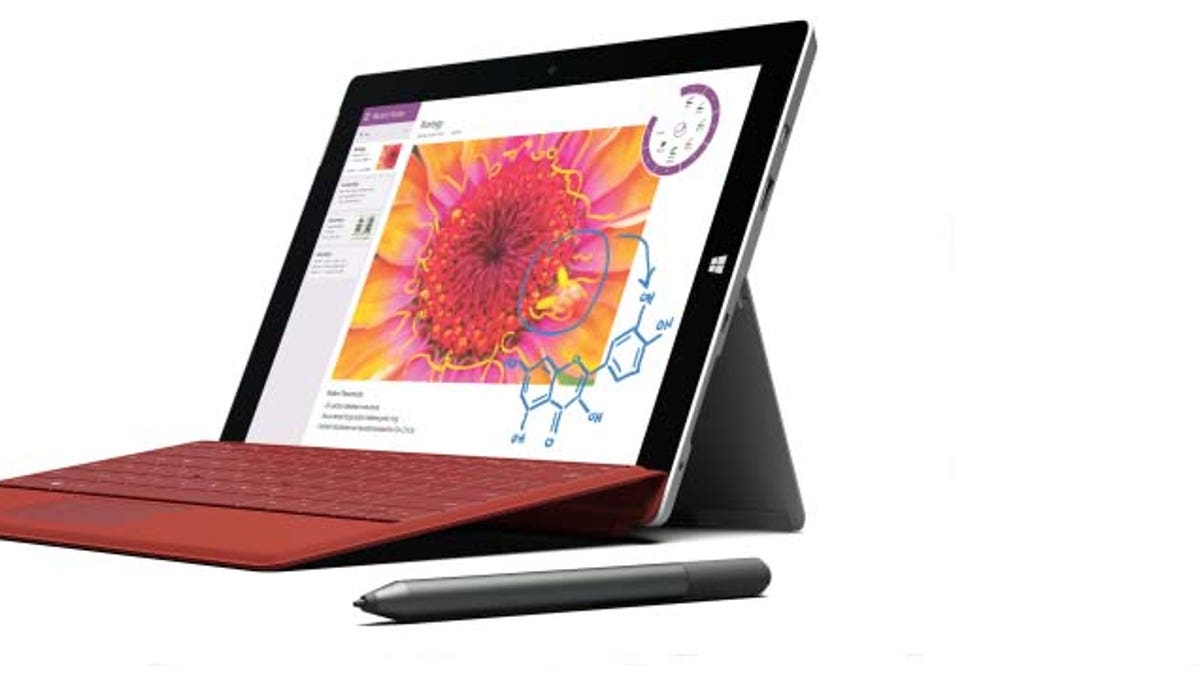
Microsoft Surface 3 (Microsoft)
Microsoft began sales of the Surface 3 on Tuesday, its most affordable and portable hybrid tablet-laptop -- but will it win over the laptop faithful?
First, a quick overview of the prominent features, upsides, and pricing. The most welcome change is internal: an Intel processor that can run all of the Windows software out there like any laptop. So, gone is Windows RT (and the ARM processor it ran on) that essentially locked consumers out of the vast library of Windows software running on Intel chips.
Other upsides: it boasts a high-quality design based on a magnesium alloy with a ceramic finish, weighs an eminently portable 1.37 pounds, comes with USB and DisplayPort connectors and a microSD card reader, sports a gorgeous 10.8-inch (1920 x 1280 resolution) display, packs Intel’s latest quad-core Atom processor, has an integrated kickstand, and includes a pressure sensitive stylus and a one-year subscription of Office 365 Personal. Pricing starts at $499.
Now, some of the drawbacks: That price does not include the all-but-essential $129.99 Surface 3 Type Cover detachable keyboard. So, if you opt for the mid-range model with a 128GB of storage ($599) that jacks up the price to over $700. Note also that the price does not include built-in 4G/LTE (those models will be available later).
And despite the excellent keyboard, it can be awkward to use on your lap (in so-called laptop mode) because the kickstand is meant to be used on a flat surface, as some reviews have pointed out.
In my experience with the Surface Pro 3 (its higher-end, more powerful cousin that I used for more than two months), setting it on your lap for brief spells is fine but for long stretches (let’s say longer than 15 minutes) it can be awkward and uncomfortable.
Another cautionary note: battery life falls short of some of the competition. Review site Anandtech, for example, describes the Surface 3’s battery life as below average compared to other tablets. On Anandtech’s Web browsing test, the Surface 3’s battery life was just under eight hours. Of course battery life can vary greatly with any device depending upon what you’re doing.
Last but not least, when used as a pure tablet, Windows 8.1 is not always touch-friendly because many legacy applications are designed for a mouse and keyboard.
So, how will it do in the marketplace? “I think Surface 3 is going to do reasonably well,” said Bob O’Donnell, president and chief analyst at TECHnalysis Research. “The concern some people have had with the [more expensive] Surface Pro 3 is price, so by getting to a lower price is attractive to a lot of people.”
